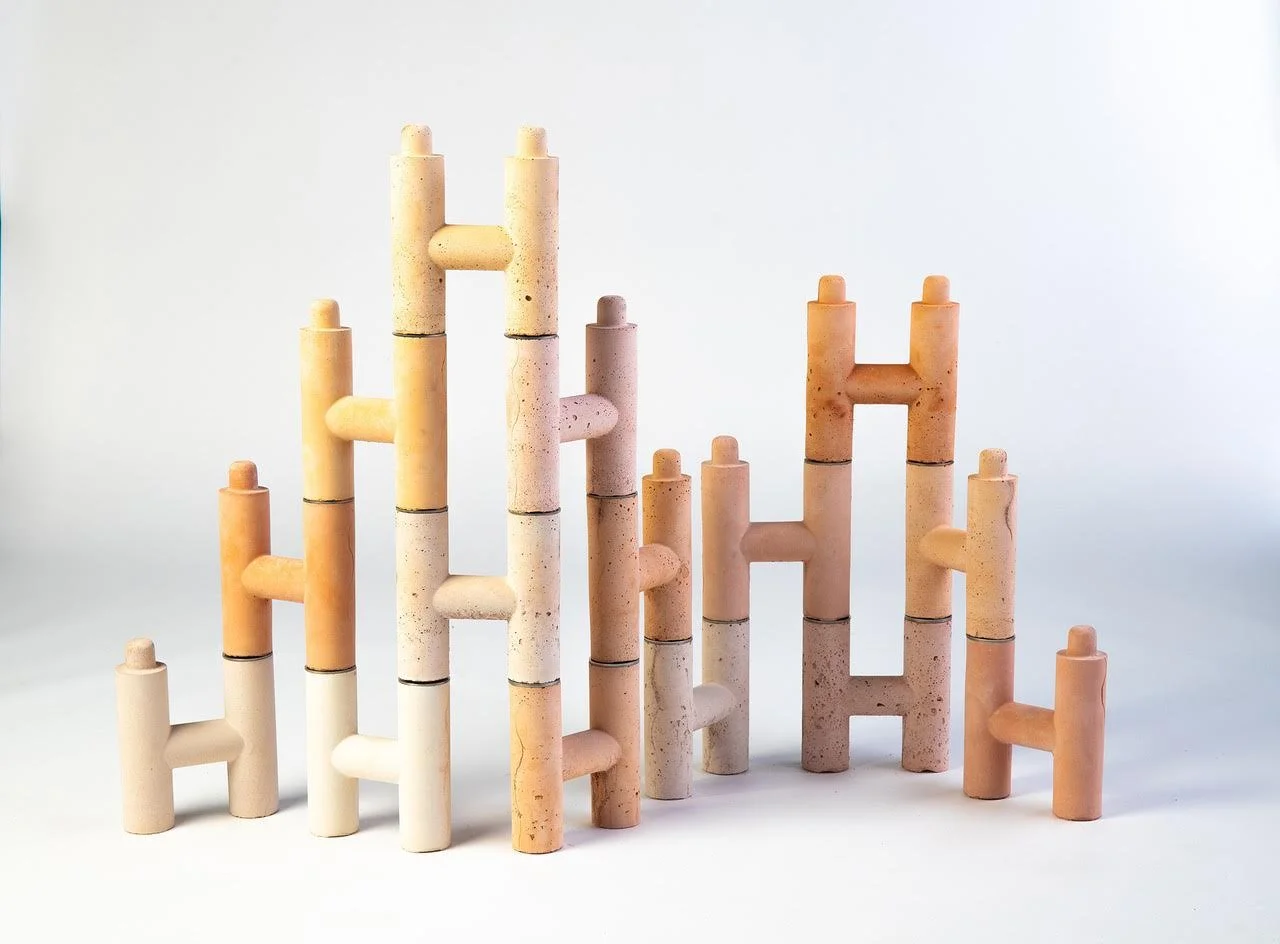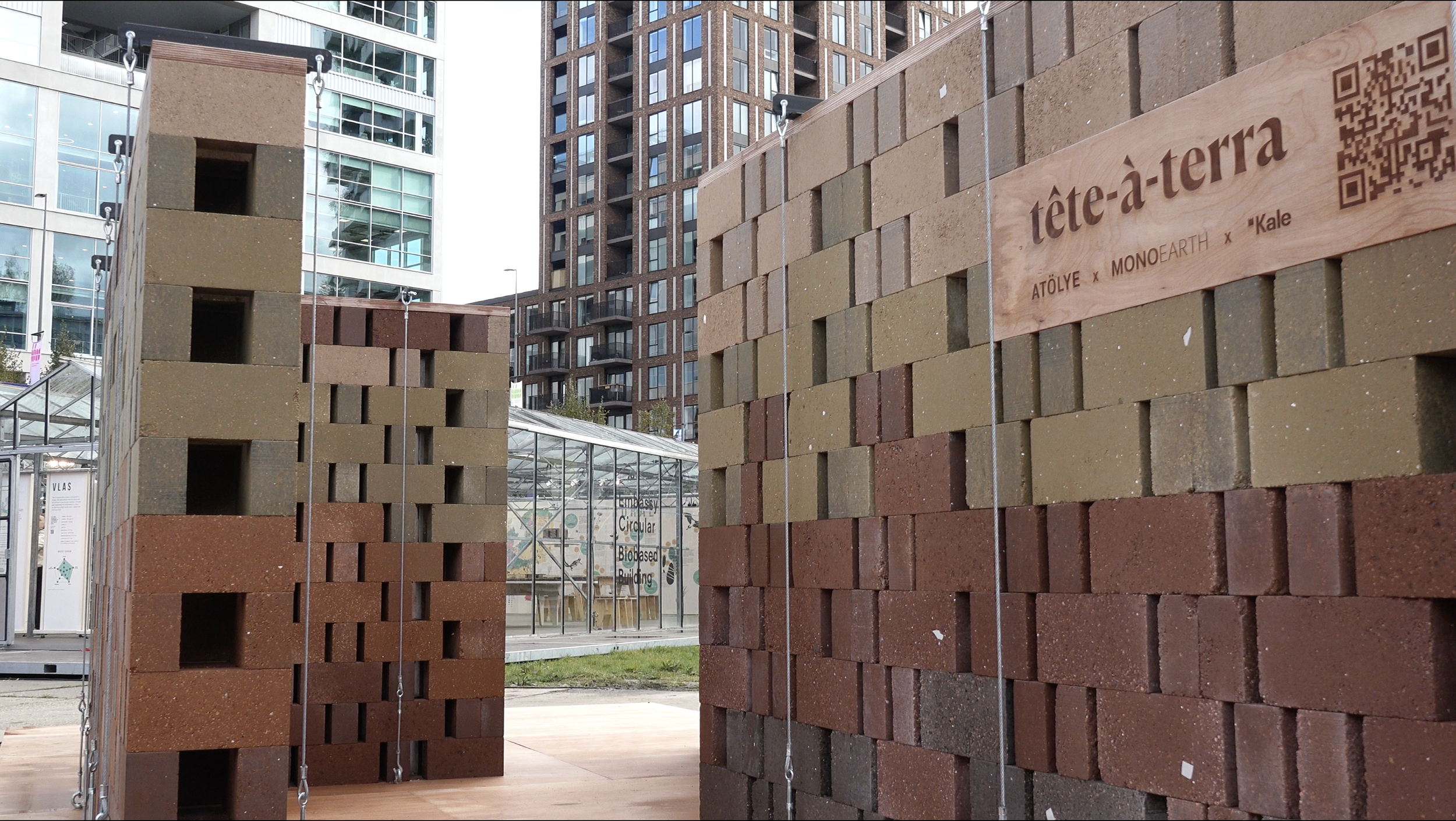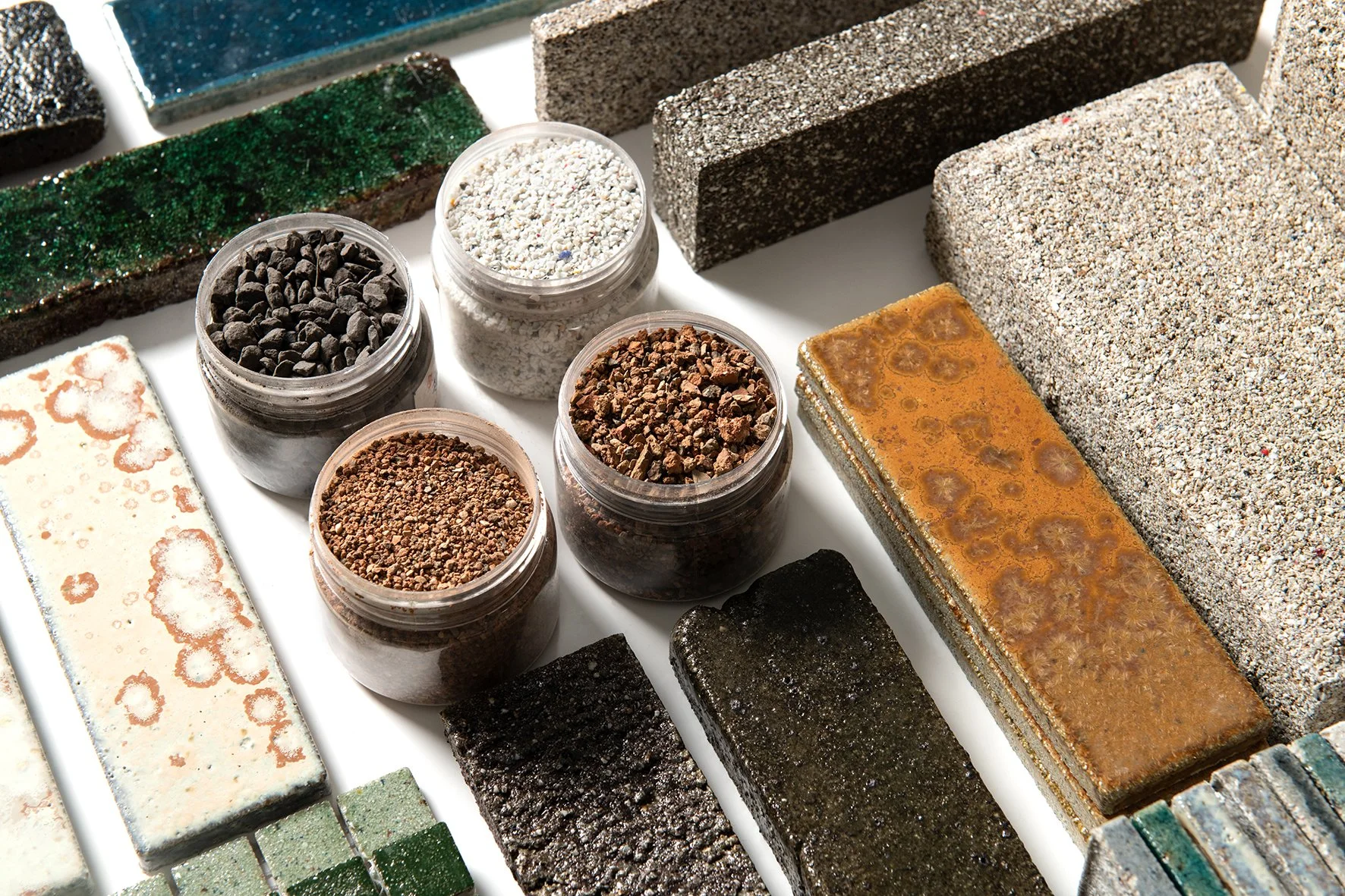Constructing from Waste
As we recently reported in our coverage of Heimtextil, there is a growing awareness that we must make the leap to planet-positive means of manufacturing, ideally incorporating new practices that are regenerative and operate with a closed-loop system.
A large part of the criticism levelled at existing systems that grew out of the Industrial Revolution and continued to develop throughout the 20th Century is the reliance upon extracting raw, virgin substances to produce new materials, products, systems and infrastructure. Coupled with the fact that this destructive mode of taking is an inherent bedfellow of carbon-emitting processes, it has become alarmingly clear that there is an urgent need for systemic change in how we approach many of our industrial activities. According to recent estimations, the construction industry makes up around 40% of global emissions, behind only those created in the production of fossil fuels, food and clothing.
While it seems change isn’t yet happening at the rate that experts think it needs to, alternatives are beginning to emerge that offer a less impactful approach. Not least those that reinstate a value to waste materials that are ordinarily cast aside at the end of their usage in the now long-established but out-of-date ‘take-make-dispose’ system collectively used by manufacturing and construction industries.
These alternative solutions highlight the potential for more sustainable building materials and supply chains at a range of scales, starting with grassroots developments produced by independent designers such as Theresa Schwaiger. A 2022 Masters graduate of the University of Art in Berlin, her project Link the System proposes geopolymers extracted from discarded bricks as a substitute for cement, which is known to be a leading culprit of CO₂ emissions within the industry. Inorganic ceramic polymers extracted from the bricks go through a chemical reaction when mixed with low-cost aluminosilicate powder, transforming the powdered substance into a solid form. As such, the resulting interlocking building blocks represent a new way of diverting one form of construction waste from landfill as well as a means to produce cementitious material that emits 4 times less CO₂ in its production.
That said, this also remains a small-scale solution, as Schwaiger explains:
“The interlocking building blocks were intended to show, on a small scale, where potential opportunities for developing more sustainable designs of products and materials might lie on a larger scale.”
As is so often the case, for this to occur in an impactful way requires collaboration. Tête-à-Terra is a project that grew out of a conversation between Turkish brands ATÖLYE Architecture, Mono Earth and Kalebodur and is another that looks to reinterpret how we manage ceramic-based waste. Combining waste produced by Kalebodur with unique soils found in Cappadocia, an area of the country famed for its distinct rock formations and carved cave dwellings, they have produced a range of earth bricks. First shown during Dutch Design Week, the team sees the initiative as a way to reconnect with the natural world and reengage with the rich history of the area, as Director of Architecture at ATÖLYE, Güray Oskay explains:
“We can turn back, look at heritage, how we have been creating building materials for centuries, and create new approaches to it, be environmentally clever and reduce our carbon footprint.”
With China producing 18 million tonnes of ceramic waste per year, Yi Design have turned their attention to the abundant waste stream, focusing on gathering material from the country’s ceramic capital, Jingdezhen. Once again, collaboration is central to their endeavours, with the company comprising of Caroline Cheung, Karl Yin and Ding Jia Liu along with numerous members of the manufacturing team as well as those ceramic manufacturers that are willing to give up their waste. As Caroline explained, initially this wasn’t as easy as one might hope, “We went door to door asking factories to give us their waste instead of throwing them away. In the beginning, they were reluctant, and we made these wooden boxes and asked them to separate domestic garbage from ceramic waste. We would go collect the waste in the boxes when they were full.” In terms of the material, initially Caroline and Karl were experimenting with making aggregates for alternative terrazzos back in 2015. Aside from material supply, one of the major sticking points was the need for a cement-based binder, but this offered Karl the perfect brief for his Masters at Central St Martins. Between 2018 and 2020 he explored new possibilities for binders and on his return he and Caroline set up a new lab to refine the new formulas he had discovered. The product range now includes YiTile, which is comprised of 70% recycled ceramic waste and YiBrick, which ranges from 90-100% recycled content. Coloured glazes offer a host of finishes and colours and are also made from construction waste including fly ash and biomass. To date, the team’s hard work and unwavering drive for positive change has repurposed over 5000 tonnes of ceramic waste - and counting.
Over in the Netherlands, Waste Epiphany have also made it their mission to transform industrial waste into beautiful new surfaces and products, notably using 2 of the most abundant materials: bricks and concrete. Having started with moulded vessels, the brand now offers a range of tiles for both interior and exterior spaces, although every item tells a unique origin story harking from various demolished buildings around the country. The warm hues of the tiles are formed naturally via the relative mix of demolish waste, although the shade and texture of each can be customsied by adjusting the amount and type of brick added into the mix.
High-end brands with an eye for design and a desire to make more sustainable choices have already come knocking, including the likes of Aesop, who are famed for their unique retail interiors. Indeed, Waste Epiphany is dedicated to producing zero carbon emissions while extracting waste and they are intent is doing so with style. "This collection represents a harmonious blend of sustainability and style," says Francisco Munoz and Macarena Torres Puga, Founders of A Waste Epiphany. "We are excited to offer a solution that not only reduces environmental impact but also elevates the design possibilities for our customers."
What these examples highlight is that there clearly is a value in waste materials, and perhaps an argument that no material need ever go to waste, rather we find new use for it. This feels particularly pertinent when it comes to virgin materials, an abundance of which are inadvertently produced as residual waste in the manufacturing of many products. Recognising the potential of these independent and generally isolated waste streams, Dutch brand WasteBase aims to divert such pre-consumer materials to more useful applications by connecting manufacturers with designers. The online platform acts like a marketplace whereby conscientious manufacturers can advertise what leftovers they have to those looking for irregular-sized but still perfectly useable materials. Yet another type of collaborative approach, the team hopes to create a society that promotes circularity through its user-friendly system that is intent on being more sustainable and resource-efficient. What’s more, the centralised digital platform structure can also be replicated to suit other regions at only a minimal cost, meaning it has the potential to bring affordable residual waste to a town or city near you!
This article was originally published by Design Insider






